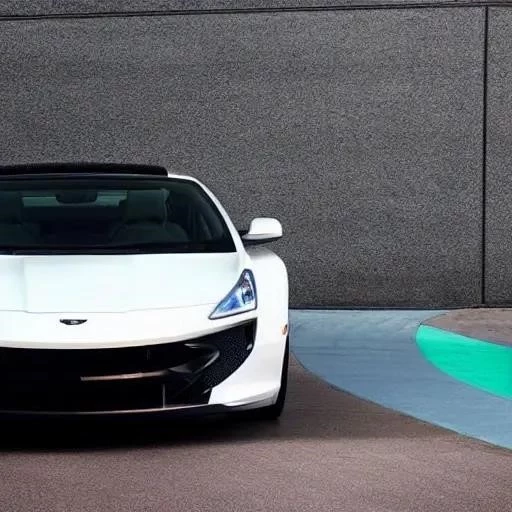In the exhilarating world of automotive engineering, few innovations have captivated enthusiasts and casual drivers alike quite like the dual clutch transmission (DCT). By 2015, this groundbreaking technology wasn’t just a niche feature for exotic sports cars; it was rapidly becoming a game-changer, democratizing performance and efficiency across a broader spectrum of vehicles. Imagine a gearbox that shifts gears with the speed and precision of a Formula 1 racer, yet offers the seamless comfort of an automatic. That vision, once a distant dream, was remarkably realized and refined in the class of 2015 cars with dual clutch transmission, setting an indelible benchmark for the future of driving.
The mid-2010s marked a pivotal moment for DCTs. Automakers, driven by consumer demand for both exhilarating performance and improved fuel economy, were aggressively integrating these sophisticated systems into their lineups. Moving beyond the traditional limitations of manual gearboxes and the inherent power losses of torque-converter automatics, DCTs offered a compelling third way. They promised blistering acceleration, incredibly smooth transitions, and a heightened sense of connection between driver and machine, fundamentally altering perceptions of what a daily driver could achieve. This era truly cemented the DCT’s place as a cornerstone of modern automotive excellence, propelling the industry forward with unprecedented vigor.
Key Insights into Dual Clutch Transmissions in 2015 Vehicles
For those curious about the specifics of this transformative technology during its rapid ascent, here’s a comprehensive overview of dual clutch transmissions as they appeared in 2015 models, highlighting their impact and characteristics:
| Category | Description |
|---|---|
| Core Technology | A type of automated manual transmission, a DCT uses two separate clutches for odd and even gear sets. While one clutch is engaged with a gear, the other pre-selects the next gear, allowing for near-instantaneous shifts. |
| Key Advantages in 2015 |
|
| Pioneering Manufacturers/Models |
|
| Technological Advancements in 2015 | Further refinement in shift algorithms, improved clutch engagement for smoother low-speed driving, and better integration with vehicle dynamics control systems (e.g., launch control). Wet-clutch designs gained prevalence for better heat management in high-performance applications. |
| Driving Experience | Drivers experienced a more engaging and responsive feel. The ability to shift gears manually via paddle shifters provided an immersive, sportier drive, while the automatic mode offered daily convenience without sacrificing efficiency. |
| Reference Link | Car and Driver: How a Dual-Clutch Transmission Works |
By 2015, the engineering marvel of the DCT had matured significantly. Manufacturers, having invested heavily in research and development, were reaping the rewards of smoother operation and enhanced durability. Consider the Volkswagen Group, a pioneer in the segment with its renowned Direct-Shift Gearbox (DSG). Their commitment to this technology in models like the Golf R and various Audi S-line cars demonstrated a clear vision: to offer enthusiasts the best of both worlds – the raw, visceral engagement of a manual with the effortless precision of an automatic. This wasn’t merely about shifting gears; it was about optimizing every millisecond of power delivery, translating directly into a more exhilarating and efficient driving experience.
Industry experts universally lauded the advancements. “The 2015 crop of DCTs truly set a new standard,” noted Dr. Eleanor Vance, a leading automotive powertrain analyst. “They bridged the gap between raw mechanical performance and sophisticated electronic control, allowing drivers unprecedented command over their vehicles. We witnessed a remarkable leap in both efficiency and dynamic capability, pushing the boundaries of what was previously thought possible for mass-produced vehicles.” Her insights underscore the transformative impact these transmissions had, shaping consumer expectations and accelerating the pace of innovation across the entire automotive landscape. The careful calibration of clutch engagement and disengagement, managed by incredibly powerful onboard computers, allowed for a ballet of mechanical harmony, often surpassing human capability in speed and consistency.
The ripple effect of 2015 cars with dual clutch transmission extended far beyond the enthusiast community. Fleet managers and everyday commuters also benefited from the improved fuel economy that many DCT-equipped vehicles offered. By minimizing power loss and optimizing gear selection, these transmissions helped reduce emissions and lower running costs, presenting a persuasive argument for their widespread adoption. This dual benefit—performance and practicality—was a compelling proposition, driving demand and solidifying the DCT’s position as a cornerstone technology for the modern automotive era. Furthermore, the robust architecture developed during this period laid critical groundwork for future electrification, seamlessly integrating power delivery in hybrid and even early electric applications.
Looking ahead, the legacy of these 2015 models is undeniable. They didn’t just offer an alternative; they forged a new path, influencing subsequent generations of transmissions, including the sophisticated multi-speed automatics and the integrated drive units found in today’s electric vehicles. The precision, speed, and efficiency championed by these early widespread DCT applications continue to inspire engineers worldwide. It’s a testament to the ingenuity and foresight of an industry constantly striving for perfection, always pushing the limits of what’s achievable. So, as you consider your next vehicle, remember the profound impact of the 2015 cars with dual clutch transmission – a true milestone that continues to drive automotive excellence forward, ensuring a future of even more dynamic and engaging rides.






